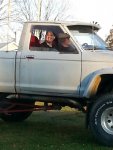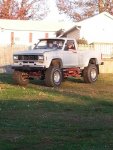cobraman809
Member
- Joined
- Jul 8, 2015
- Messages
- 7
- Vehicle Year
- 1986
- Transmission
- Automatic
Hey guys. I have an 1986 ford ranger 9in rear 302 bored .30 over power vacuum assist and i have all new wheel cyl, drums, calipers, lines, master cyl. I have bled many times, adjusted the rear. I still have a low pedal. HELP!!!!















